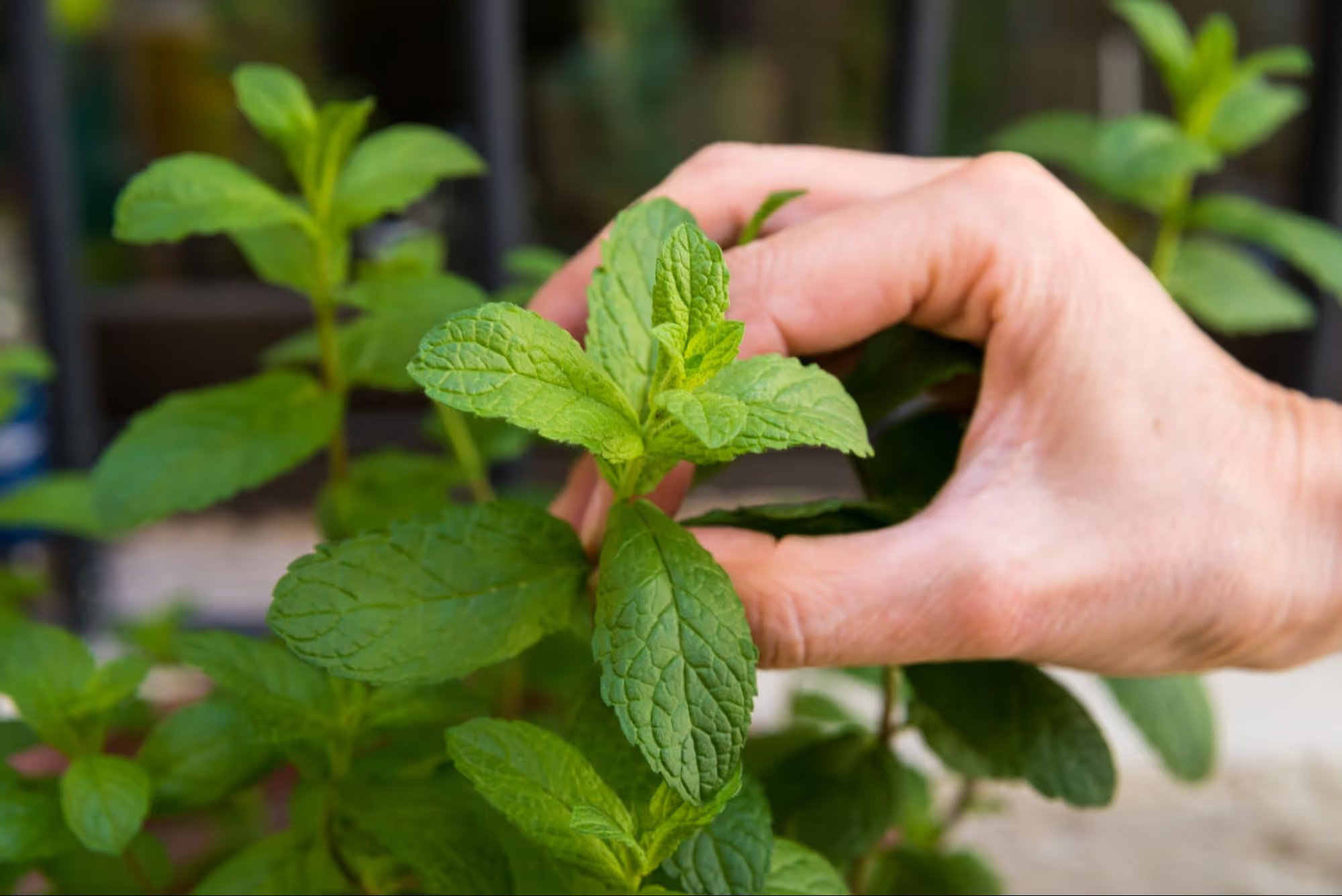
Mint is a widely recognized plant, appreciated for its refreshing aroma and numerous uses in cooking, medicine, and cosmetics. Known for its easy cultivation and robust growth, mint is a favorite plant in gardens and farms around the world. However, despite its resilience, mint plants can face various threats that jeopardize their health and productivity. Protecting and preventing these threats is key to ensuring successful and sustainable mint production.
Pests
Mint is susceptible to attack by various pests, including aphids, spider mites, and root infestations. Aphids, small insects that suck plant sap, can weaken mint by depleting its nutrients, while spider mites cause spots on the leaves. Root infestations, which attack the roots, can lead to wilting and, if not detected in time, can kill the plants.
Diseases
Fungal and bacterial diseases can significantly impact mint growth. Powdery mildew, a fungal disease, appears as white powder on the leaves and can slow down plant growth. Rust is another fungal infection that causes orange or reddish spots on the leaves. Additionally, root rot, caused by overwatering or poor drainage, can damage the roots and make the plant more susceptible to other infections.
Extreme Weather Conditions
Environmental factors, such as extreme weather conditions like high temperatures, frost, or drought, can also hinder mint growth. Mint thrives in moderate climates with consistent moisture. Prolonged drought or heat can stress the plants, making them more vulnerable to diseases and pests.
Weeds
Weeds can compete with mint for nutrients, water, and sunlight, slowing down growth and reducing yield. Weeds like grass or broad-leaved plants can enter gardens with mint, especially if the plants are too crowded or the soil is poorly prepared.
Integrated Pest Management (IPM)
One of the most effective approaches to protecting mint from pests is the implementation of integrated pest management. This strategy combines cultural, biological, and chemical methods to control pest populations in an environmentally responsible way.
Cultural practices include crop rotation, proper spacing of plants, and prompt removal of infected or damaged plants.
Biological control involves introducing natural predators, such as ladybugs to control aphids, as well as using nematodes to combat root infestations.
Chemical protection should be applied sparingly and only when necessary, prioritizing organic or natural pesticides to minimize damage to beneficial insects and the environment.
Disease Management
Proper care and maintenance can significantly reduce the risk of diseases in mint plants.
Watering: It is recommended to water mint at the base, avoiding contact with the leaves, to prevent fungal diseases. Additionally, it is important to ensure proper soil drainage to avoid root rot.
Pruning: Regularly removing infected leaves and stems helps prevent the spread of diseases such as powdery mildew and rust.
Fungicides: In case of diseases like mildew or rust, applying organic fungicides or copper-based treatments can be effective in controlling disease spread.
Environmental Control
Creating the right growing conditions is crucial for mint’s overall health.
Temperature and Humidity: Mint prefers moderate to cool temperatures. In cases where the climate is too hot, it is recommended to provide shade during the hottest part of the day.
Watering: Maintaining consistent soil moisture is essential, but overwatering should be avoided, as it can lead to root rot. Drip irrigation systems or pipe systems are ideal for uniform moisture without over-watering.
Soil Preparation: Mint grows best in well-drained, fertile soil. Before planting, it is recommended to enrich the soil with organic matter and ensure an appropriate pH value, which should be slightly acidic or neutral (6.0-7.0).
Weed Control
Weed control can be achieved through various methods:
Mulching: Applying a layer of organic mulch around mint plants helps suppress weed growth, retain moisture, and lower soil temperature.
Hand Weeding: Regularly removing weeds manually prevents their growth, but care should be taken not to damage the shallow roots of mint.
Cover Crops: Planting cover crops like clover between mint rows can contribute to the natural fight against weeds.
Use of Resistant Varieties
Choosing mint varieties that are more resistant to pests and diseases can significantly contribute to the sustainability of production. Varieties known for their resilience reduce the need for chemical treatments, thereby preserving the ecological balance and enhancing the long-term resistance of plants.
Proper Spacing and Planting
Ensuring proper spacing between mint plants allows for good air circulation, which reduces the risk of fungal infections and pest attacks. Crowded plants are more susceptible to mold, fungi, and other diseases. Adequate spacing between plants ensures that each plant receives sufficient sunlight and nutrients for healthy growth.
Soil Testing and Management
Regular soil testing is essential to maintain optimal pH levels, adequate nutrient content, and good drainage properties. Healthy soil promotes strong plants that are less susceptible to pest and disease attacks, thus improving overall productivity.
Regular Monitoring
Proper and regular inspection of mint plants for signs of pests, diseases, or environmental stress allows for early detection of problems. Timely intervention reduces their impact on yield and contributes to maintaining healthy plants.
Protecting mint from threats such as pests, diseases, and extreme weather conditions is crucial for maintaining healthy and productive production. Implementing strategies such as integrated pest management, regular soil testing, proper plant spacing, and using resistant varieties can significantly help preserve the plants and reduce the need for chemical treatments. Additionally, maintaining optimal growing conditions, such as proper watering, soil preparation, and weed control, ensures long-term productivity and mint health. Proper prevention and regular monitoring allow for timely responses to potential issues, ensuring successful and sustainable mint production.